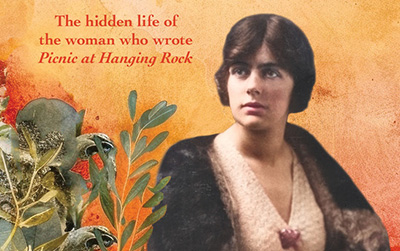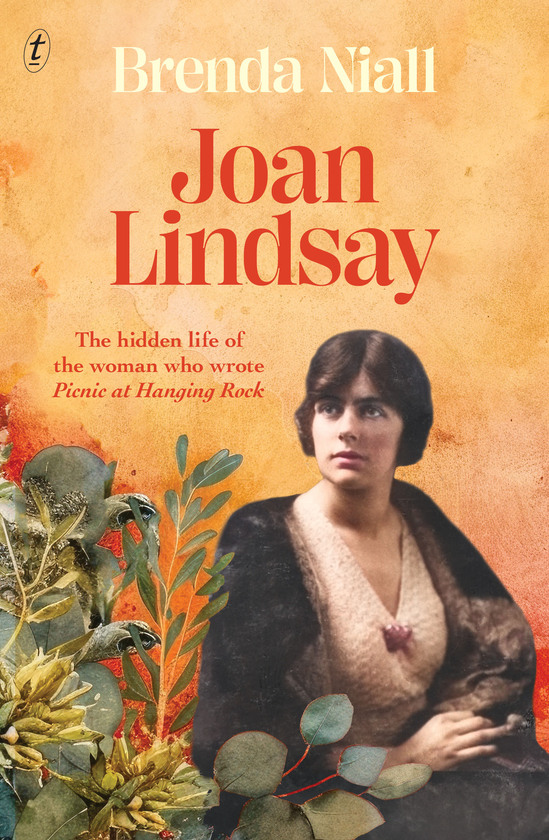- Free Article: No
- Contents Category: Biography
- Review Article: Yes
- Article Title: ‘Tremendous fun’
- Article Subtitle: First the novel, then the film
- Online Only: No
- Custom Highlight Text:
Picnic at Hanging Rock, the 1975 film directed by Peter Weir, has achieved iconic status in Australian cinema, while the story on which it is based has also yielded a television drama series, a ballet, plays, and a musical. Indeed, the fiftieth anniversary of the film is being marked by the Sydney Theatre Company’s revival of Tom Wright’s modern adaptation. The story enjoying this long and varied life was originally published as a mystery novel in 1967. Yet the author of that story, Joan Lindsay (1896-1984), is herself something of a mystery. Aged seventy-one at the time of her novel’s publication and scarcely known as a writer, she has received little recognition since.
- Featured Image (400px * 250px):

- Alt Tag (Featured Image): Susan Sheridan reviews ‘Joan Lindsay: The hidden life of the woman who wrote Picnic at Hanging Rock’ by Brenda Niall
- Book 1 Title: Joan Lindsay
- Book 1 Subtitle: The hidden life of the woman who wrote Picnic at Hanging Rock
- Book 1 Biblio: Text Publishing, $36.99 pb, 248 pp
- Book 1 Cover Small (400 x 600):

- Book 1 Cover (800 x 1200):

- Book 1 Readings Link: https://www.readings.com.au/product/9781923058019/joan-lindsay--brenda-niall--2024--9781923058019#rac:jokjjzr6ly9m
No longer so. Brenda Niall, doyenne of Australian biography, has produced an engaging account of ‘The hidden life of the woman who wrote Picnic at Hanging Rock’. She presents her subject as a woman who, like so many talented women of her generation and class, lived in the shadow of her husband, ‘ebullient Sir Daryl, a high achiever in the art world as gallery director, painter, entrepreneur and expert networker’. For Joan, daughter of eminent Melbourne barrister Theyre à Beckett Weigall, had married into the eminent but bohemian Lindsay family of artists and writers. Daryl Lindsay, knighted for his work as director of the National Gallery of Victoria, was a much younger brother of Percy, Lionel, and the notorious Norman.
Joan and Daryl met at the Gallery Art School, where she had begun her studies in 1916, attending drawing classes with Frederick McCubbin. Daryl, returned from war service in France and England, where he had taken some classes at the Slade School of Fine Art, was trying to establish himself in the art world. Throughout their lives both continued to paint, particularly landscapes, but Daryl had to make a career, and did so very successfully. Joan had no such expectation; she supported his work and entertained colleagues and friends. Visitors to their home, Mulberry Hill, on the Mornington Peninsula, included Prime Minister Robert Menzies, Governor-General Richard Casey and his wife, Maie (a childhood friend of Joan), Keith and Elisabeth Murdoch, visiting British actors Laurence Olivier and Vivien Leigh, and opera star Dame Nellie Melba. It was the Murdoch connection (Daryl was godfather to Rupert) which led to his securing the role of NGV director, after a long period of financial uncertainty and moving between Melbourne and London in the 1930s. As director’s wife, Joan acted as unpaid assistant, writing learned notes relating to his acquisitions, encouraging students and young artists, and often dealing with would-be donors to the collection.
Niall presents Joan as an artist manqué, a woman who gave up a possible career as a painter, and who nurtured aspirations as a writer all her life. Certainly, on the few occasions she exhibited, her painting was well received, and she wrote, in various modes, all her life. Yet Joan’s habitual comment about her painting and writing, ‘tremendous fun’, suggests that she did not want to be seen as taking herself too seriously, a not uncommon ploy used by women to deflect any suspicion that they might harbour ambitions of their own.
![Joan and Daryl Lindsay at Mulberry Hill (National Trust of Australia [Victoria}, Mulberry Hill [MH4098], courtesy of Text Publishing)](/images/ABR_Digitising%202025/March%202025/Joan_and_Daryl_Lindsay_at_Mulberry_Hill_National_Trust_of_Australia_Victoria_Mulberry_Hill_MH4098_courtesy_of_Text_Publishing.jpg) Joan and Daryl Lindsay at Mulberry Hill (National Trust of Australia [Victoria], Mulberry Hill [MH4098], courtesy of Text Publishing)
Joan and Daryl Lindsay at Mulberry Hill (National Trust of Australia [Victoria], Mulberry Hill [MH4098], courtesy of Text Publishing)
Throughout the 1920s and 1930s, she published occasional pieces and short reviews, mainly for the Melbourne Herald, and later collaborated on some histories – of the Red Cross, of early Melbourne architecture – and Masterpieces of the NGV (1949). Early evidence of her imaginative writing suggests this really was done for fun. For example, while she and Daryl were living in London (so he could build his reputation as an adviser to the Felton Art Bequest), Joan wrote some plays, apparently not for production, with two Australian sisters, Margot and Ann Goyder, who later became famous for the crime novels they published under the name ‘Margot Neville’. Following this, her first published book was a comic novel, a spoof on travel writing, Through Darkest Pondelayo by ‘Serena Livingstone-Stanley’ (1936). It had a short shelf life, and it was many years before her second book appeared. Time Without Clocks (1962) was something completely different, a memoir of the Lindsays’ life at Mulberry Hill, and it did well. ‘Written with grace and humour’, the memoir ‘evoked a past most readers would have liked to believe in’. However, another memoir, Facts Soft and Hard, which Niall describes as ‘a quirky account’ of Joan’s experiences visiting galleries in the United States in 1952, when Daryl held a Carnegie fellowship, was dismissed as ‘cheerful chattering’ when it appeared in 1964.
All the more surprising, then, that a mere three years later Joan published Picnic at Hanging Rock, a mystery novel set in 1900, which begins with the disappearance of three schoolgirls and a teacher at the famous monolith, and follows the violent ‘ripple effects’ of this unsolved mystery in the small world they inhabited. The ‘cautiously favourable’ early reviews gave no indication that the book would become a phenomenon. Yet the mystery, the open ending, attracted fan mail from intrigued readers, with questions about what they took to be the real events on which the story was based. Of course, the author declined to solve the mystery for them, but she later described her book in a way that seems to account for its power – as the translation of ‘a long-seen vision into a living reality’, a vision of girls in their summer dresses climbing on the ancient rock. She thought of it as an Australian Impressionist painting, she told an interviewer.
It must surely have been the strong visual images as well as the mystery plot that attracted the extraordinarily successful team assembled by Pat Lovell – Peter Weir as director, Cliff Green as script writer, Russell Boyd as cinematographer – to make the film in 1975. They carved out a sharper, though still mysterious, story from a somewhat overloaded novel, ensuring its enduring power. Joan lived long enough to witness the film’s success. Indeed, she was delighted to be involved in its making, when the team made their headquarters at Mulberry Hill and she was able to learn about the filmmaking process at first hand.
The Picnic film was a commercial as well as an artistic triumph, and Joan was the centre of attention. Giving interviews, seeing more translations of her novel and discussions of its literary qualities, sustained her during the final decade of her life. Daryl’s health had been declining for some time; he died in 1976 at the age of eighty-seven. With the help and loving companionship of artist Rick Amor and his family, Joan was able to stay on at Mulberry Hill until her own death in 1984.
Brenda Niall introduces herself, as well as her subject, in the biography’s opening chapter, ‘Meeting Lady Lindsay’. This occurred in 1984, when she interviewed Joan about her cousin Martin Boyd, Brenda Niall’s first biographical subject. Niall had produced a short study of that novelist and his work in 1974, and later produced the full biography, in 1988. It is a nice return to her own professional point of origin, and she is to be congratulated on another exemplary study.


Comments powered by CComment